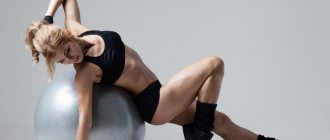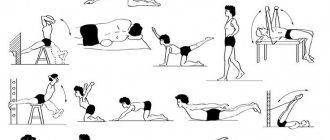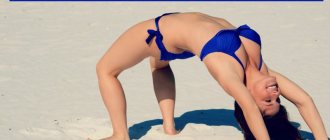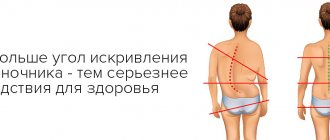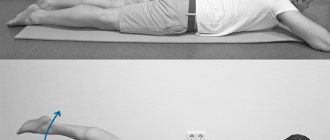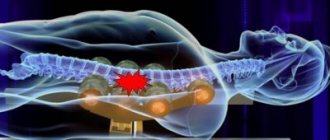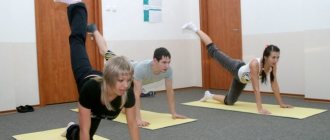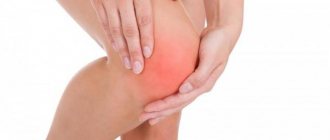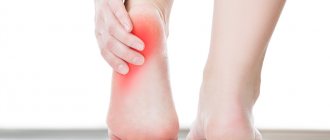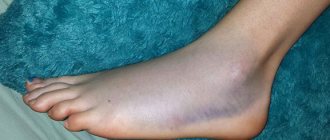Increasingly, with back pain, people - both young and old - are looking not for pills and patches, but for exercises for the spine. For acute back pain, this set of exercises from Bubnovsky will help you straighten up and return to activity. What can be done to treat osteochondrosis? For this case, Dr. Bubnovsky has a separate gymnastics that can also be done at home.
There is a whole mountain of letters on my desk, and many of the authors of these letters are complaining about the same problem. We are talking about back pain, and the name of this problem is osteochondrosis. The only difference is that some have osteochondrosis in the lumbar region, others have osteochondrosis in the cervicothoracic region, and others... Is it possible to get rid of back pain without taking medications?
To begin with, I want to say that osteochondrosis is not a disease, but a payment for misunderstanding and ignorance of one’s own body. This is my deep conviction.
Surprisingly, many people who come to see me consider themselves healthy, and pain is an accident. They explain that they lifted something heavy, leaned over unsuccessfully, turned sharply... And they ask: “Do something so that everything goes away right away.”
Treatment of osteochondrosis
It doesn't happen like that! To get rid of back pain, you will have to work long and hard. I believe, and my long-term medical practice confirms this, that osteochondrosis is not a disease, but a way of life. Choose: to be treated to the point of self-destruction, changing one pill for another, to be pulled into corsets and make blockades that kill peripheral nerves, or to restore your health by abandoning all of the above?
I often tell my patients: “The body will crush you if you don’t exercise it.” This means that a person who does not exercise his muscles contributes to their atrophy. As a result, the muscles are compressed in volume, and along with them the vessels and nerves passing through the muscles are compressed, so blood flow and nutrition to the joints deteriorate. Thus, a person looks quite normal on the outside, but inside he seems to be tightened, and at the same time, not only his spine, but his entire body suffers.
If the joints of the spine become rusty and the deep muscles of the spine harden, endurance is lost, strength and flexibility are lost. In such a situation, a person sometimes cannot even tie his shoelaces, because pain shoots through him when he bends over. The patient goes to the doctor, he is diagnosed with “osteochondrosis”, and then treatment according to the well-known plan: pills, physiotherapy, corset...
Bubnovsky’s gymnastics for the neck
Exercises for the cervical spine. These exercises are universal for people of all ages. In addition to the therapeutic effect, they are used for the purpose of prevention.
Treatment of the cervical spine lasts more than three months:
- While sitting on a chair, perform traction movements, after several approaches, move on to push-ups. If classic flexion and extension of the arms in a lying position are difficult, you need to move on to partial push-ups (with emphasis on the knees). Perform the exercise to the best of your ability.
- Place your hand against the wall, place your knee and shin on the high bench. Using your free hand with an expander, make movements toward and away from you. The exercise works the muscles of the neck and spine. Instead of an expander, you can use a dumbbell, lifting it up and down.
- Lying on the floor, bend your legs at the knees and place them slightly wider than your shoulders. The dumbbells must be lifted behind the head with straight arms, then returned to their original position. Perform the exercise 10-15 times.
- Sitting on a bench, hold a dumbbell in one hand. Raise it above your head with a straight arm and bring it back, bending your arm at the elbow. Then lift it up and start it again. Repeat the exercise no more than 20 times for each hand.
Causes of osteochondrosis
In modern medical literature, osteochondrosis is a disease in which various degenerative processes occur, as a result of which the vertebrae and intervertebral discs are affected and the nutrition for which voluntary muscles are responsible is disrupted.
If at least one muscle stops performing its functions, a “hole” appears, into which the disease seeps. But one individual muscle does not atrophy - several muscles, several “hearts” that bring nutrition to different organs and tissues, atrophy at once. This is a chronic process that begins unnoticed by a person and continues for a long time. Therefore, if the picture shows degenerative changes in the vertebrae and discs, that is, osteochondrosis, other disorders are simultaneously present in the body - these could be headaches, numbness of the fingers, increased intracranial pressure, arrhythmia, lower back pain, problems with the bronchi and a number of others ailments.
In other words, osteochondrosis, or disease of the spinal column, is not a separate disease, but an indicator of a person’s attitude towards his own muscles.
I often deal with problems of acute back pain - so acute that the patient is simply unable to think about anything else, but at the same time, photographs of his spine do not show any pathological changes. Conversely, there are pictures of mostly elderly people who do not have a single entire segment of the spine, but there is no back pain. Where does this paradox come from?
The answer is simple. A person may complain about general weakness and that his “legs can’t walk,” but at the same time he still does all possible gymnastics! I would like to remind you once again that muscles recover at any age and from any condition, but they need to create the necessary conditions for this - that is, perform physical exercises that restore the “pumping” function of the muscles. As a result of regular exercise, the vessels and capillaries that transport blood are restored, which means muscle nutrition improves and inflammation is relieved.
Love yourself, your body, your muscles and joints and learn to take care of them, and not just exploit them ruthlessly. Next - simple but effective exercises that will help cope with osteochondrosis.
Gymnastics by Dr. Bubnovsky for pain in the spine
The gymnastics developed by the doctor have a positive effect on the diseased spine and also strengthens the muscles that support it.
The set of exercises prescribed below not only eliminates pain, but also prevents its further occurrence:
Warm-up:
- Get on all fours, focusing on your knees and palms. In this position, you need to move very slowly around the room until the pain in the spine begins to subside.
- Before performing it, it is recommended to wrap your knees in a bandage ; you must breathe deeply throughout this exercise.
- Steps must be taken smoothly and stretched. When the left leg moves forward, the right hand should also move forward, and vice versa.
Attention! When performing the described exercise, it is not recommended to wrap your knees tightly. Blood circulation must be free.
Next, a set of exercises is performed that helps get rid of pinched nerves in the area of the intervertebral discs, and can also be used to improve the stretching of the intervertebral discs of the thoracic region :
- Take the body position as in the exercise described above . On a deep exhalation, gently bend upward, and while exhaling, bend in the opposite direction. Repeat about 20 times. If acute pain occurs, it is necessary to reduce the number of repetitions of the exercise to 15.
- The situation described earlier. Get on all fours, trying to move your body forward as much as possible. You cannot bend your back while performing this exercise. This exercise is also used to stretch the spine.
- Taking a deep breath, bend your arms at the elbows, and as you exhale, gently lower yourself down. The next inhalation is to rise up smoothly, exhale - straighten your arms and slowly lower yourself onto your feet, try to stretch the muscles in the lumbar area. You need to repeat the exercise as many times as you have the strength to do.
- Lying on your back, place your arms along your body. Take a deep breath, and as you exhale, lift your pelvic part off the floor. Try to make a half-bridge. While inhaling, slowly return the body to its original position. The exercise must be performed smoothly 15 times.
Bubnovsky’s gymnastics for knee joints
The presented set of exercises by Bubnovsky improves the functioning of the entire musculoskeletal system, strengthens muscles and improves blood circulation:
- Crush ice, wrap it in cloth and tie it on your knees. Gently get down on your knees and walk as much as you can. At first it will be very painful and difficult, but the pain will gradually pass. For the first time, it will be enough to take 2 steps, then every day the steps must be increased.
- Sitting on the floor with your legs extended, try to grab your toe and pull it towards you. The exercise stretches the knee joints and nourishes the tissues with oxygen.
- Stand with your feet wider than your shoulders, holding the support with your hands, and squat with a straight back. Your knees should be at a 90 degree angle. Squats must be increased with each approach, gradually reaching 100.
- While kneeling, your arms are extended forward. As you exhale, you need to smoothly lower yourself between your feet. The exercise must be performed 30 times.
Exercises to treat the joint
Exercise for the spine using expanders
Today, expanders are a universal equipment that is found in almost every home and takes up quite a bit of space. But few people know that they were originally developed for restoration purposes.
You can purchase such a simulator at any sports store. Currently, expanders from Smartelastic are especially popular. This company is quite popular and in demand in sports equipment stores.
A set of stretching exercises with an expander allows you to develop your back muscles:
- Hold the expander firmly in your hands. Rest against it, then smoothly bend at an angle of 90 degrees. Return to original position. Repeat 20 times or more, subsequently increasing the number of repetitions.
- Sitting on a chair, we fix the expander at the bottom of the legs. Then we begin to pull it towards ourselves. You need to pull as far as you can. Approaches for each patient are selected individually.
- The expander is tightly fixed to the wall. Stand close to the wall, holding the ends tightly in your hands. Slowly pull the expander to your chest, your back should be straight when performing the exercise, your legs should be slightly wider than your shoulders. Perform several approaches 5-6 times.
Symptoms of spinal osteochondrosis by department
Symptoms of lumbar osteochondrosis
- constant aching or acute pain in the lower back;
- pain increases with physical activity or movement;
- pain can radiate to the sacrum, legs, pelvic organs;
- loss of sensation in the legs;
- inability to turn or bend over;
- maintaining the same position in which you feel the least pain.
Symptoms of cervical osteochondrosis
- headaches that worsen with movement and do not go away after analgesics;
- dizziness when turning the head suddenly;
- pain in the arms, shoulders and chest;
- “floaters” and colored spots before the eyes;
- deterioration of vision and hearing, “ringing” in the ears;
- occasionally numbness of the tongue, change in voice.
Symptoms of osteochondrosis of the thoracic region
- pain in the chest and between the shoulder blades, when raising the arm, bending over;
- the pain is felt more strongly at night, during hypothermia, turning, or heavy physical activity;
- painful sensations intensify with deep inhalation and exhalation;
- numbness of certain areas of the skin, “goosebumps”;
- itching, burning, feeling of cold in the legs;
- attack of pain between the ribs while walking;
- sensation as if chest were being squeezed by a hoop.
How to relieve discomfort and pain with spinal osteochondrosis yourself?
To reduce pain due to osteochondrosis at home, you can always perform a set of pain-relieving gymnastics. The exercises of the complex are described in detail on the page following the link “Analgesic gymnastics”.
Gymnastics on the Bubnovsky simulator (MTB)
The Bubnovsky simulator (hereinafter referred to as MTB) was created to restore the musculoskeletal function of the spine and joints. It allows you to stretch the spine and strengthen the muscle frame.
The use of MTB is effective for the following diseases:
- osteochondrosis;
- knee disease;
- diseases of the genitourinary system;
- rehabilitation period after heart attacks and strokes.
Exercises on the simulator should be selected by a doctor on an individual basis. The exercises must also be performed under the supervision of an experienced specialist. The entire exercise should be performed slowly using proper breathing.
Several MTB exercises:
- Sitting on the floor, rest your feet against the wall and clasp the handle of the exercise machine with your hands. Raise your arms while leaning forward. When performed correctly, the spine will stretch, the back will bend, and the shoulder blades will converge.
- Sitting on the floor, hold the handle of the exercise machine with your hands, pull the handle towards you, while bending your elbows.
- Sitting with your back to the machine , hold the handle with your sore hand, lifting it up as much as possible.
